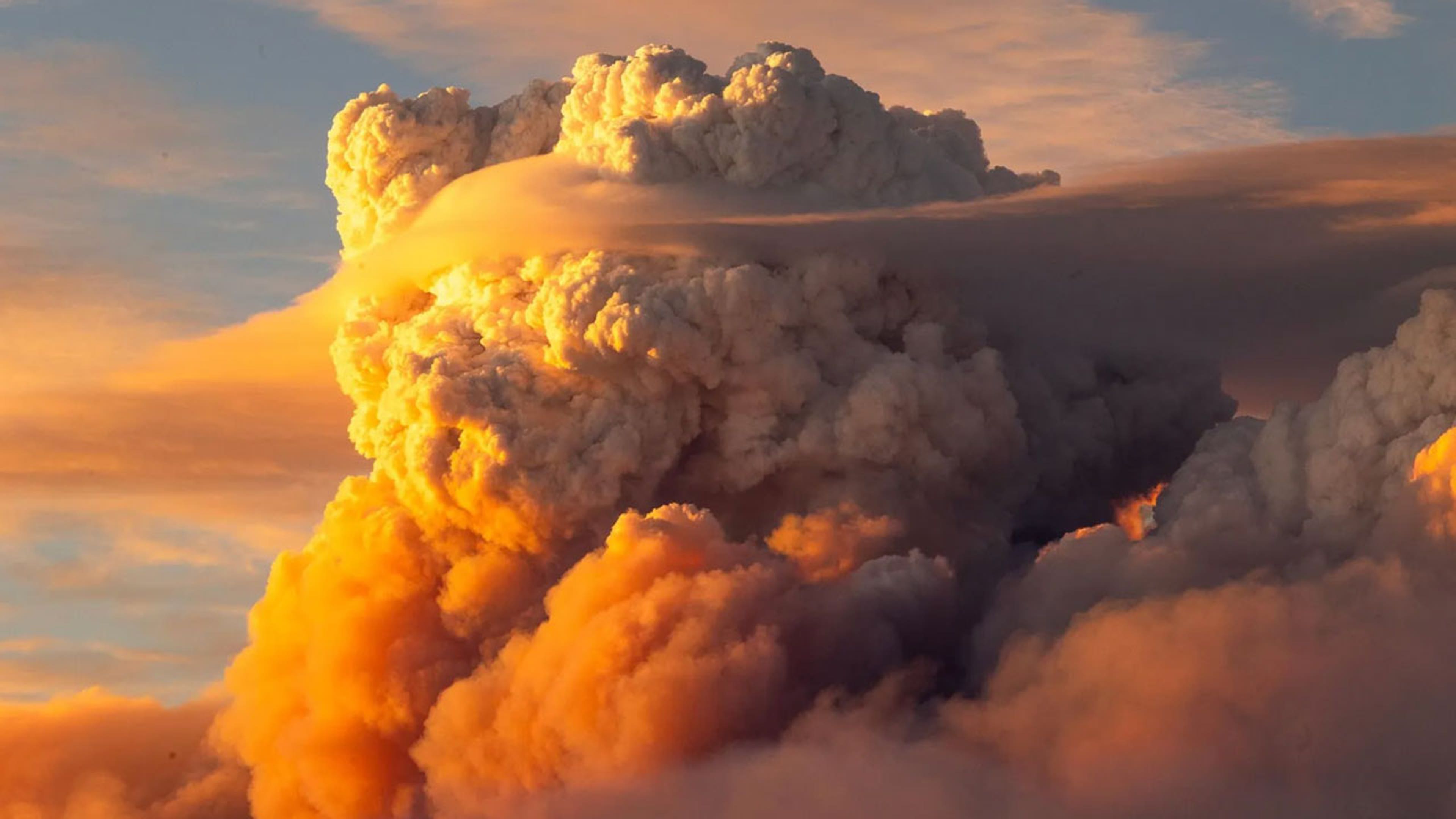TO The massive forest fire, known as Dragon Bravo Fire, is burning on the north edge of the Grand Canyon National Park, becoming one of the largest forest fires in the history of Arizona. Lightning on July 4, Blaze has now burned more than 130,000 acres and currently has a containment of 29%. The rapid growth of the fire has resulted in significant damage and has led to the complete closure of the north edge during the rest of the 2025 season.
Ignition and growth of fire
Driven by a combination of critically low moisture, high temperatures and sustained winds, fire behavior has been unpredictable. Fire managers initially chose to manage the Forest Health Fire, a common practice often beneficial. However, a week after the ignition, the fire intensified, growing by tens of thousands of acres per day and forcing fire teams to change to a complete suppression strategy.
Smoke is established in the Grand Canyon. Photo
The most devastating impact has been the loss of historical infrastructure on the north edge. The iconic Grand Canyon Lodge, the Center for Visitors and numerous historical cabins were destroyed in mid -July. Preliminary evaluations estimate that between 50 and 80 structures have been lost, including employee housing, which has displaced hundreds of park personnel. Fire teams, which total more than 1,300, have focused on protecting the remaining assets while fighting fire on difficult terrain.
Impact on Park visitors and Arizona’s path through hikers
The fire has also affected access to the park. In addition to the closure of North Rim, all the paths of the inner cannon corridor are closed due to the accumulation of smoke, including the North Kaibab, South Kaibab Trail, Phantom Ranch and Angel Bown Bright trail. This has not only impacted tourism, but has also created a significant logistics challenge for the community through those that are carried out.
The Arizona path, which travels through the Gran Canyon corridor, has been severely affected. A closure of approximately 90 to 100 miles on the path, from the beginning of the southern path of Kaibab to Winter Road, has forced hikers to stop their walk or find alternative deviations. Many hikers try to complete the path during the autumn season, at which time more fire can be contained, but the North Rim will remain closed until 2026. Officials urge hikers to closely monitor the official updates of the Arizona Trail Association and the National Parks Service for the most updated paths.
The eight largest forest fires in Arizona
Dragon Bravo Fire is a historical event, with firefighters officials pointing out that the fire is now the largest eighth in Arizona’s history and the largest that is currently burned in the US. The ability of the fire to create clouds of pyrocuse, «clouds of fire» that can generate their own climate, has been documented, which further complicates fire efforts with erratic winds and rays.

A cloud of pirocumulous is a dense and imposing cloud that is formed on a large and intense heat source like a forest fire. It is essentially a storm cloud generated by fire. Photo: The weather channel
With the driest conditions and the strong winds that are expected to continue, the fire remains a serious threat to the park and the surrounding communities. As the teams continue to fight against the fire, the north edge of the Grand Canyon changes forever.
This website contains affiliate links, which means that the walk can receive a percentage of any product or service that you buy using the links in the items or ads. The buyer pays the same price that would do it differently, and his purchase helps to support the continuous objective of the walk to address his quality backpack advice and information. Thanks for your support!
For more information, visit the page about this site.


:max_bytes(150000):strip_icc():focal(993x513:995x515)/Eve-Plumb-book-080825-173d8f9eab3b40e4a5b71ccc779943bd.jpg?w=238&resize=238,178&ssl=1)

